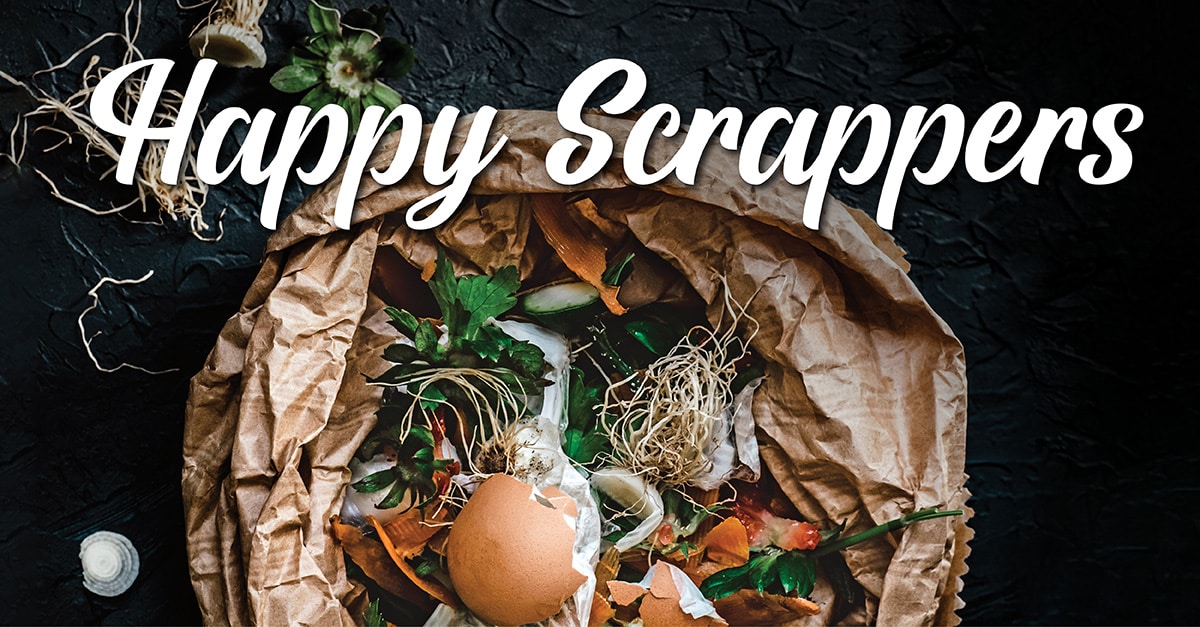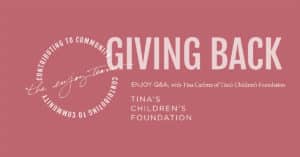Happy Scrappers
Scott Valley Community Compost Program…
It’s estimated that a third of the world’s food goes to waste, mostly ending up in landfills and held hostage in plastic trash bags that are deprived of oxygen. When this happens, those scraps break down anaerobically and produce methane – a greenhouse gas 25 times more potent than carbon dioxide. But thanks to a relatively new composting program in the city of Etna, some residents are hoping to put those table scraps to far better use. “A huge percentage of what we send to landfills is actually compostable, so it’s stuff that we could be using to improve our soils and our food production systems instead of creating waste,” explains Jenn Rogges, the compost coordinator for Scott Valley’s Community Compost Program.
With 20 years of composting under her belt, Rogges laughs at what she describes as her “weird amount” of experience, which started with her own backyard pile and eventually graduated to an egg-laying ranch where she composted large amounts of chicken manure. “Many people don’t realize that compost isn’t fertilizer. It’s a long-term soil improvement plan that actually improves the structure of your soil so that it can hold onto things like nutrients and water. It provides space for roots and microorganisms to thrive. And then, over time, compost will break down and release more nutrients. So, it’s about the long game.”
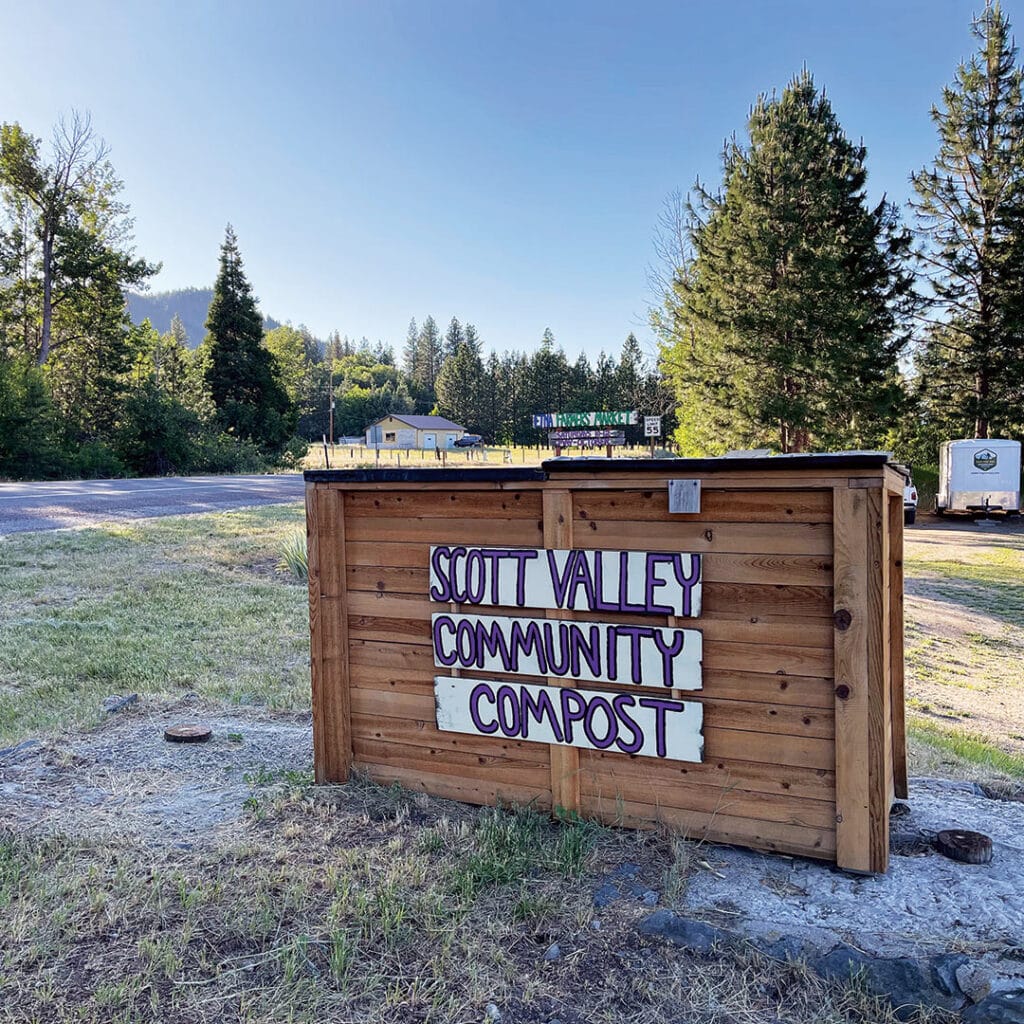
In Scott Valley, Rogges has discovered that while many people are happy to compost, they aren’t necessarily doing it effectively. “A lot of food scraps just get thrown into a pile in the backyard. So, these scraps are feeding some nice wildlife like possums and raccoons and sometimes backyard chickens, but there’s no benefit to the garden, and then people still go out and buy bags of fertilizer or compost instead. So, what we’re trying to do is get people to drop off their food scraps and then I help them get something they can put back to use in their gardens.”
According to Rogges, composting can be a little more “finicky” than one might imagine. “You must have a 30-to-1 carbon-to-nitrogen ratio. Carbons are your brown things, like brown leaves, sticks, straw, and sawdust. Then, the nitrogen is your green things like vegetable scraps, green grass, anything that looks green basically. That’s where people have a hard time when you have a pile of vegetables in your backyard, the moisture content is too high, and you don’t have any carbon. So instead of trapping your nitrogen with your carbon, the scrap pile is just basically off-gassing all your good nitrogen as ammonia.” Rogges also lays out the importance of air movement through the pile. “Microorganisms are a lot like people. They need space, oxygen, food and water to live. And, if you don’t provide those things for them in your pile, then nothing’s going to happen because they can’t thrive in their environment.”
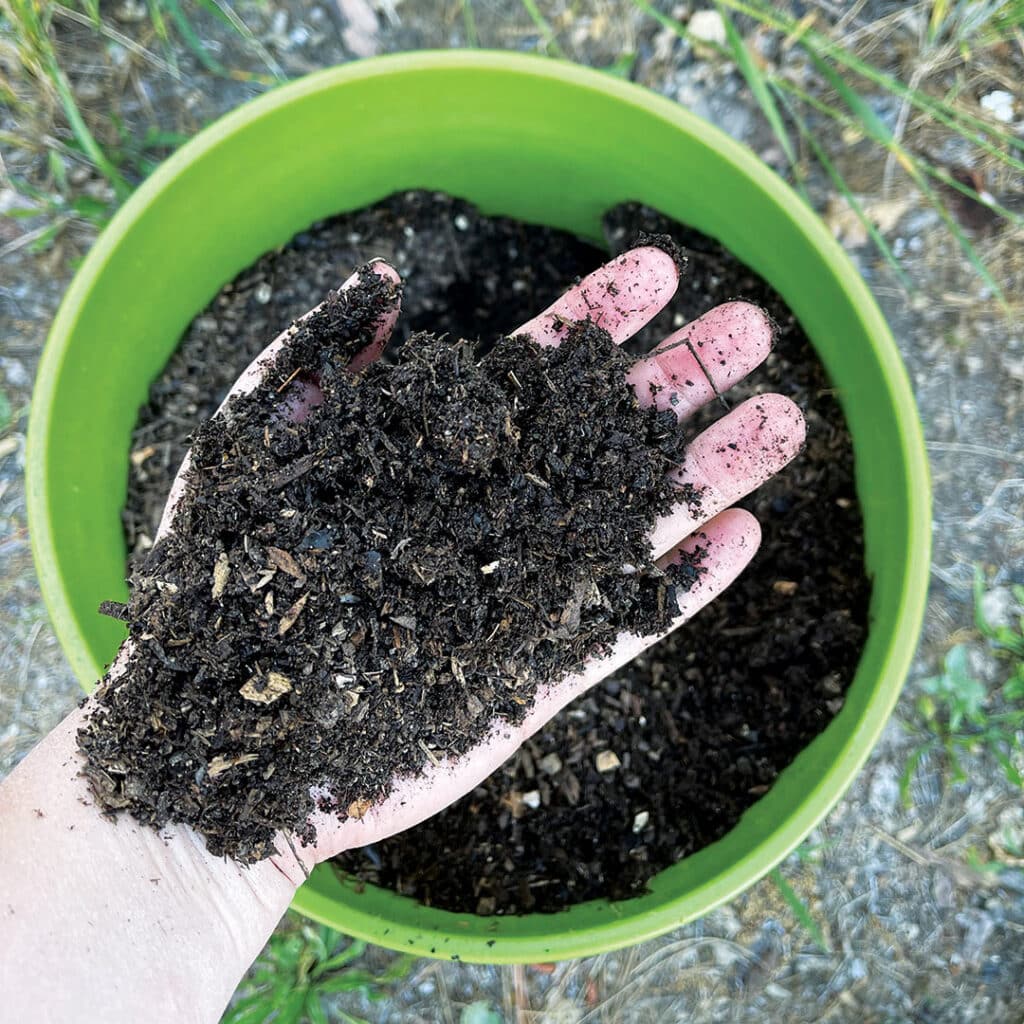
Participation in the program is as easy as saving food scraps and dropping them off at a 24-hour collection bin on the corner of the Scott River Watershed Council property. “You can just drive right up, open the lid and there’s a wheelbarrow inside, and dump your food scraps. It doesn’t have to be in a bag, but it can be if you want to. And then I come along and haul the wheelbarrow out to the composting area and mix it together to get the formula right. The good thing is I’m not squeamish. A lot of people think the scraps are yucky, but I think they’re amazing. So, I’m willing to do the dirty work. Then, the mixture gets heated up, and the microorganisms start doing their thing. I stay on top of turning the pile to make sure they’re getting an even amount of oxygen and moisture. This happens for about four weeks, and then the pile just sits and finishes for another couple of weeks. Then, it’s ready to give to people. What we’re accepting right now is all food waste except for meat and dairy because we do have bears that are interested in the meat. We have a little electric fence to deter them. But I think if there was meat in the pile, the electric fence wouldn’t be enough.”
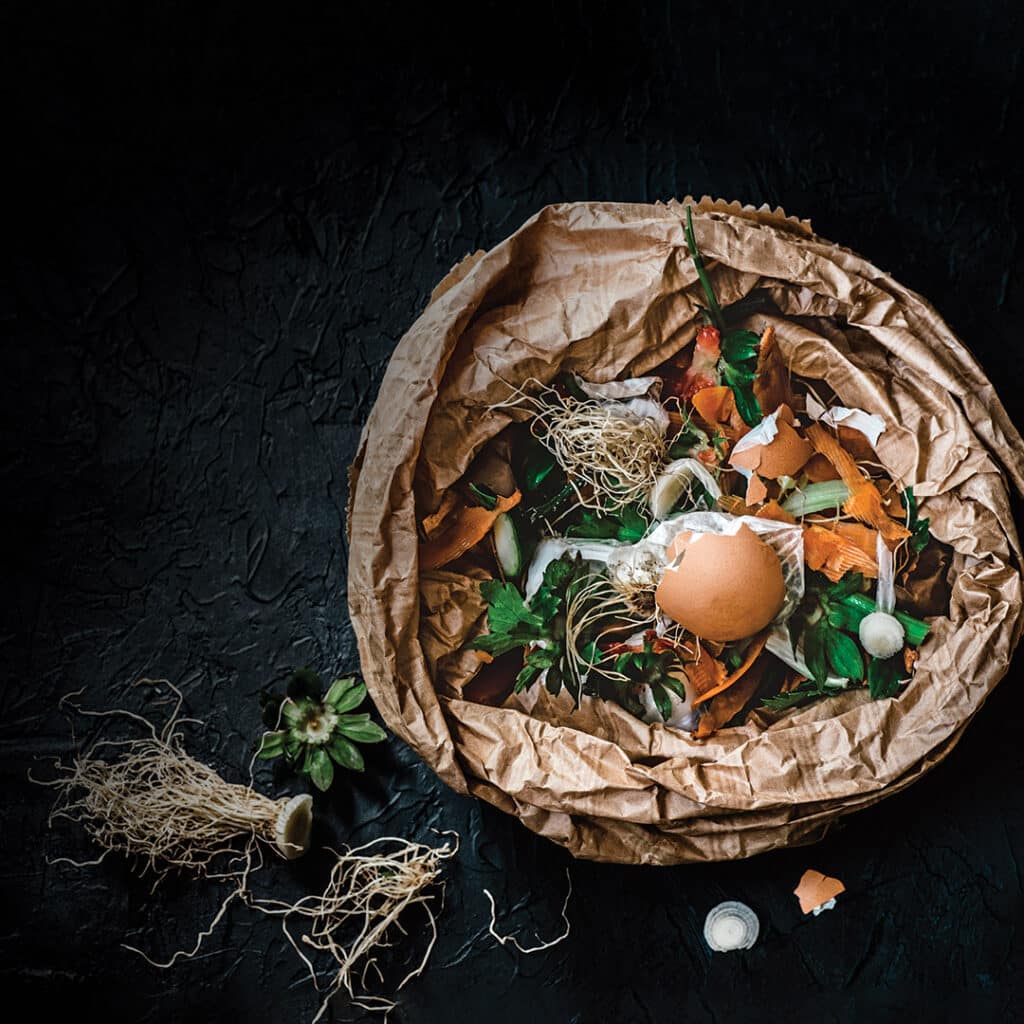
Rogges firmly believes a soils program is essential, and not just in Etna. “We often talk about climate change, and we’re really focused on water, but I think there’s a soil crisis coming. I talked to someone once who says the future will look like plants in a hydroponic system because that’s what we’ve left ourselves. Soil is made from bedrock, and it takes millions of years for it to become the soil that we’re using. We need to nurture it. And when you plow, and you see that soil just blowing away, all that topsoil is not coming back.”
But Rogges isn’t all doom and gloom. “Now that we have our system down, I think it would be nice to get people volunteering because it’s good to get your hands in the dirt. I can turn the pile, but it’s way more fun with other people. It also smells amazing, like chocolate earth, and you get to walk away with a product that’s better than anything you’d find in a store•
For more information on the compost program,
please email Jenn Rogges at jenn@scottriver.org or reach out to the Scott River Watershed Council in Etna
Article Written by:
Megan Peterson has been a freelance storyteller for more than two decades, with writing credits ranging from National Geographic to the Sundance Channel. She also brings a background in marketing and audio tours, and has traveled and worked on six continents. Megan currently lives in Northern California with her family and a menagerie of pets.

